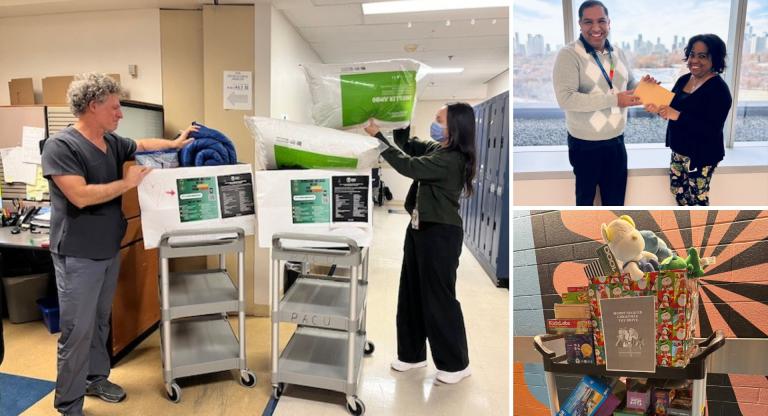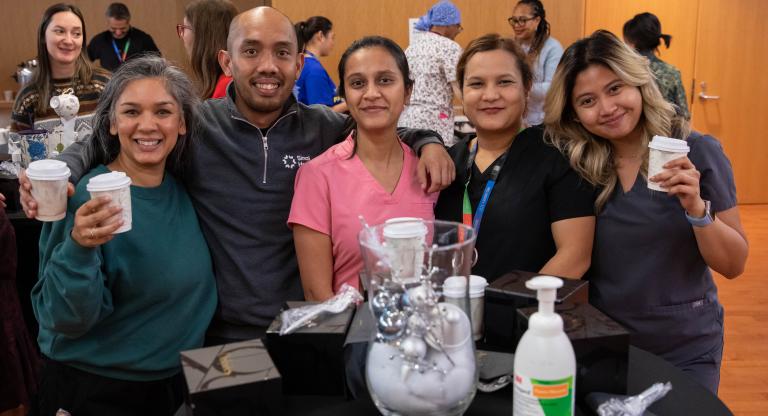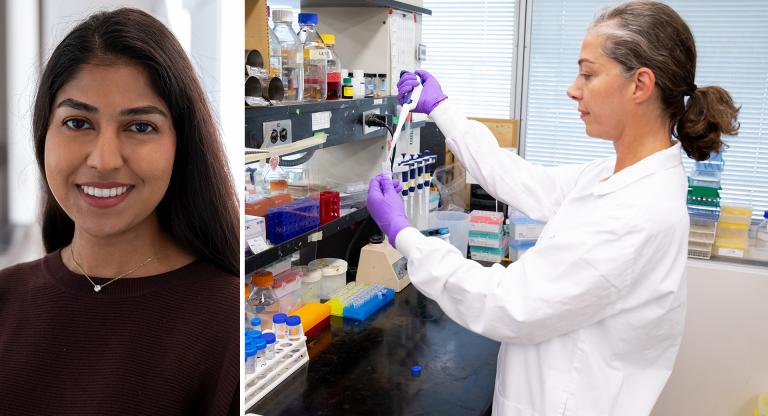The delicate process of reintroducing essential care partners and visitors

Perla Domondon beams as she plays a game of solitaire on a computer screen in her hospital room at Bridgepoint Active Healthcare with her husband Scott Brown. She’s happy to be able to spend time with him and see him face to face.
Earlier this spring, Scott wasn’t able to visit when Bridgepoint, like hospitals across the province, temporarily paused most visits due to COVID-19. It was the longest time the pair had been apart since 2009, when they had a similar experience with visitor restrictions during the SARS outbreak in Toronto.
“It’s been hard because we’re used to seeing each other every day,” Scott says of the separation. “But we both understand that it’s to keep everyone safe. We’re both over 60 and getting COVID-19 could be dangerous for both of us, especially for her.”
Perla has been at Bridgepoint since 1996 after she experienced a brain hemorrhage that impaired her mobility and communication. Scott has been by her side as a partner and a caregiver ever since. Before the pandemic, Scott visited her every afternoon during the week and Perla would usually go back to their home with him on the weekends.
Perla and Scott are eager to return to their weekly routine. With the rate of new COVID-19 cases declining, Sinai Health has been gradually reintroducing visitors. This process is independent from the province’s strategy to reopen as hospitals need to monitor for any indications of a surge in infections as services and businesses resume. Jennifer Ridgway, Manager of Patient Experience and Engagement says a measured, careful and yet compassionate approach is essential. “Family caregivers play a vital role in the overall health and well-being of our patients. Health care organizations have the difficult task of balancing this need for family presence with the need to minimize the risk of COVID-19 exposures and outbreaks in our hospitals to keep everyone safe.”
Scott and Perla adapted to the separation by keeping in touch with phone calls three or four times a day. Now that he can visit—first once a week, now three times per week— Scott enjoys being able to help Perla with various tasks again. “When I arrive for my visits, she has a list of things she wants my help with,” he says, laughing.
The couple are getting back to some of their old routines, including playing solitaire and reading together. Like so many other people, they’re also closely following the number of new cases of COVID-19. Seeing the numbers go down gives them hope that Perla will be able to go home for the weekends again and they can get back to seeing each other every day.











